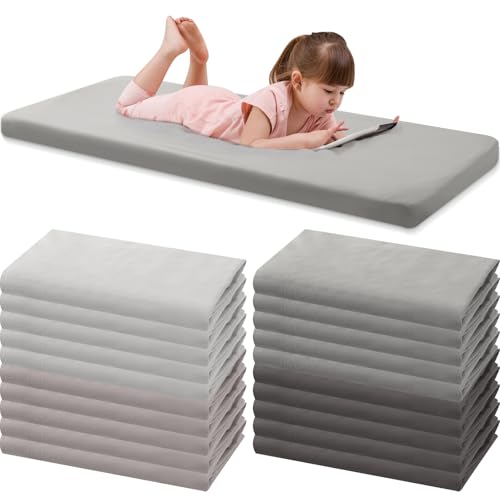
A wedge is a simple machine that has been used by humans for thousands of years. It is one of the six types of simple machines and is one of the most basic tools that we use in our everyday lives.
In its simplest form, a wedge is a triangular-shaped object that is thick at one end and tapers to a thin edge at the other. This shape allows it to separate objects or hold them together by applying force to push them apart or to keep them tightly packed together.
One of the most common uses of a wedge in everyday life is in cutting or splitting objects. For example, a knife is a type of wedge that is used to cut through food, while an axe is a larger, more powerful wedge used for splitting wood.
Another common use of a wedge is in securing or holding objects firmly in place. For instance, when we hammer a nail into a wall, the pointed end of the nail acts as a wedge, forcing its way into the material and keeping the nail firmly fixed in place.
Wedges can also be found in various tools and devices that make our lives easier. For example, the zipper on our clothing uses a wedge mechanism to join the teeth together and keep our clothes fastened. Similarly, doorstops use wedges to hold doors open, and chisels use wedges to chip away at materials and create intricate shapes.
In conclusion, the wedge is a versatile and essential tool that we use in numerous ways in our everyday lives. Whether it’s cutting, splitting, securing, or shaping, the wedge is a simple yet powerful machine that continues to play a significant role in our daily activities.
The Role of Wedge in Daily Life
A wedge is a simple machine that is used in various aspects of everyday life. It is a triangular-shaped tool with a sharp edge that is used to separate or split objects. The wedge works by converting a downward force into a horizontal force, making it easier to move or separate objects.
Here are some common examples of how wedges are used in daily life:
- Doors: Doorstops and door wedges are commonly used to keep doors open or closed. They prevent the door from moving by wedging it against the floor or wall.
- Tools: Wedges are integral parts of many tools, such as axe blades and chisels. The sharp edge of the wedge allows it to cut through materials like wood or metal.
- Utensils: Knives are examples of wedges used in the kitchen. The sharp edge of the knife allows it to cut through food easily.
- Vehicles: Wedges are used in vehicle brakes. The brake pads are wedged against the brake rotor to create friction and slow down or stop the vehicle.
- Construction: Wedges are used in construction for splitting or separating materials. For example, wedges are used to split logs for firewood or to separate concrete slabs.
- Medical Applications: Surgical scalpels and needles have wedge shapes, allowing doctors to make precise incisions or insert them into the skin.
Overall, the wedge is a versatile and important tool that plays a vital role in various aspects of daily life. From simple tasks like keeping doors open to complex applications like medical procedures, the wedge is a fundamental tool that makes our lives easier and more efficient.
Essential Tool in Construction Projects
Wedges play a crucial role in various construction projects due to their ability to create separation or hold objects firmly in place. Here are a few examples of how wedges are used as an essential tool in construction:
- Structural Support: In building construction, wedges are used to provide support and stability. For instance, wooden or metal shims are inserted between walls and floors to level and stabilize them. This ensures that structures remain safe and sturdy.
- Demolition: Wedges are commonly used in demolition projects to split and separate materials like concrete, bricks, or stones. Heavy-duty steel wedges are pounded into pre-cut gaps, applying force that helps break apart the material.
- Carpentry and Joinery: Carpenters and joiners often rely on wedges to ensure tight and secure joints in wooden constructions. They use wedges to adjust the fit of doors, windows, or furniture pieces, guaranteeing that they are properly installed and aligned.
- Cutting and Splitting: Wedges are indispensable tools in activities that involve cutting and splitting materials. For example, loggers use wedges to split logs into smaller pieces for firewood or construction. Additionally, masonry workers use wedges to split bricks or stones when shaping them for specific building requirements.
- Mechanical Engineering: Wedges are used in mechanical engineering projects to secure components in place. They are often employed when assembling machinery or installing heavy equipment. The tapered shape of wedges ensures a secure fit and prevents any movement or shifting of the components.
These are just a few instances that highlight the importance of wedges in construction projects. With their simple yet effective design, wedges continue to play a vital role in various construction tasks, enhancing stability, precision, and overall structural integrity.
Improving Mobility and Accessibility
Wedges play an important role in improving mobility and accessibility in various aspects of everyday life. Here are a few examples:
1. Wheelchair Ramps
Wedges are commonly used in the construction of wheelchair ramps. These ramps provide a sloped surface that allows individuals using wheelchairs or other mobility aids to easily access buildings or navigate changes in elevation. The angle of the wedge-shaped ramp gradually increases or decreases, making it easier for people with mobility challenges to move around independently.
2. Doorstops
Doorstops are another everyday item that uses wedge principles to improve accessibility. These small wedges are typically placed behind doors to prevent them from closing or to hold them open at a specific angle. By using doorstops, people with mobility aids, such as crutches or walkers, can easily navigate through doorways without struggling to keep the door open or worrying about it closing behind them.
3. Vehicle Access
Wedges are also utilized to improve accessibility in vehicles. Car ramps and lifts often incorporate wedges to create a smooth transition from ground level to the interior of the vehicle. These built-in wedges allow individuals with limited mobility to enter and exit vehicles more easily, enhancing their overall mobility and independence.
In addition to specific examples, wedges are also used in various other everyday objects and situations to enhance overall mobility and accessibility. From furniture design, where wedges are incorporated to provide stability, to the construction of inclined planes in roadways and sidewalks, wedges are a fundamental aspect of modern mobility and accessibility enhancements.
Overall, wedges play a crucial role in improving mobility and accessibility, enabling individuals with mobility challenges to access buildings, navigate through doorways, and enter vehicles more easily. By incorporating wedges into design and construction, society can ensure that individuals with limited mobility can participate fully in everyday activities and lead independent lives.
Cutting and Splitting Materials
A wedge is a simple machine with a wide variety of practical applications. One of the most common uses of a wedge in everyday life is for cutting and splitting materials.
Cutting
Wedges are used extensively in cutting tools. For example, knives and scissors both rely on the wedge principle to cut through materials. The sharp edge of a knife or scissors concentrates force on a small area, allowing it to easily slice through objects like food, paper, or fabric.
Axe blades also utilize the wedge shape to efficiently cut through wood or other tough materials. The thin edge of the axe concentrates the force from the swing onto a small point, allowing the blade to penetrate and split the material apart.
Splitting
Wedges are particularly useful for splitting objects, such as logs or rocks. When a wedge is driven into a material, it applies a separating force that causes the material to split apart along its natural grain or weak points.
Log splitters, for example, often use a wedge-shaped blade to split logs into smaller pieces for firewood. The wedge is forced into the log with a hydraulic system, creating enough pressure to split the log apart.
Wedges are also used in demolition tools like jackhammers, where they help break apart concrete or other solid materials. The repeated striking force of the jackhammer’s wedge-shaped bit can fracture and chip away at the material until it breaks apart.
In conclusion, wedges play a vital role in cutting and splitting materials in various aspects of everyday life. Whether it’s slicing food, chopping wood, or breaking apart rocks, the simple wedge shape helps us accomplish these tasks more efficiently and effectively.
Enhancing Efficiency in Cooking
Wedges are essential tools that enhance efficiency in cooking. They are used in various ways to make culinary tasks easier and more efficient.
Slicing and Chopping
One of the most common uses of wedges in cooking is for slicing and chopping fruits and vegetables. The wedge shape allows for precise and controlled cuts, making it easier to create evenly sized pieces. Whether it’s slicing tomatoes for a salad or chopping onions for stir-fry, wedges help to streamline the preparation process and improve efficiency in the kitchen.
Opening Cans and Bottles
Wedges are also utilized in cooking to open cans and bottles. Can openers often have a wedge-shaped blade that punctures the lid, allowing for easy access to the contents. Similarly, bottle openers feature a wedge-shaped tip that inserts under the bottle cap, making it effortless to remove. These simple yet effective tools save time and effort when it comes to opening food and beverage containers.
Furthermore, wedges are used in cooking to pry open stubborn jar lids. By positioning the wedge between the lid and the jar, it creates leverage, making it easier to twist and open the jar. This technique is particularly useful for individuals with limited hand strength or arthritis.
Overall, wedges play a vital role in enhancing efficiency in cooking. Whether it’s slicing, chopping, opening cans or bottles, or loosening jar lids, wedges provide the leverage and control necessary to expedite tasks, ensuring a smoother and more productive cooking experience.
Simplifying the Assembly and Disassembly Processes
Wedges play a crucial role in simplifying the assembly and disassembly processes of many everyday objects. They are used to separate or join components with ease, saving time and effort.
One common example of how wedges are used in assembly is in furniture construction. When assembling a chair or a table, wedges are often used to secure the legs to the frame. By inserting a wedge into the joint between the leg and the frame, the components are held firmly together, eliminating the need for additional tools or fasteners. This not only simplifies the assembly process but also allows for easy disassembly when needed.
Similarly, wedges are also used in the disassembly process of various objects. For instance, in automotive maintenance, wedges are often employed to separate or remove parts that are tightly fit together. This can include disconnecting electrical connectors, loosening stubborn bolts, or removing stuck components. By inserting a wedge and applying a small amount of force, the parts can be gently pried apart, making the disassembly process safer and more efficient.
Another practical application of wedges in everyday life is in the field of construction. When building structures, wedges are commonly used to position and align heavy materials such as beams or concrete slabs. By inserting wedges underneath these materials, builders can easily adjust their position and ensure a precise fit. This simplifies the construction process by allowing for quick and accurate adjustments, ultimately leading to better-quality outcomes.
In conclusion, the use of wedges in everyday life greatly simplifies both assembly and disassembly processes. From furniture construction to automotive maintenance and construction projects, wedges prove to be invaluable tools, saving time, effort, and allowing for efficient and accurate work.






